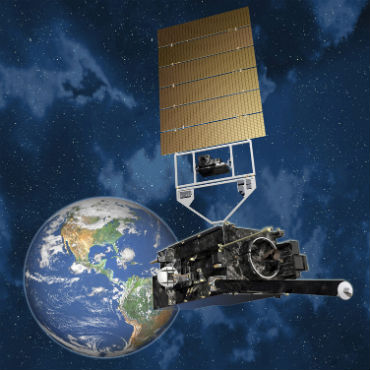Review team recommends ‘gap-filler’ satellite program

The National Oceanic and Atmospheric Administration needs to begin work immediately to help mitigate a pending gap in polar-orbiting weather satellite coverage.

The National Oceanic and Atmospheric Administration should begin procuring atmospheric sounding instruments immediately and attach them to a “gap-filler” satellite to help mitigate a pending gap in polar-orbiting weather satellite coverage, according to a federally commissioned independent review team.
The recommendations were made Nov. 14 in a report evaluating NOAA’s two major satellite programs and are aimed at mitigating a potentially catastrophic gap in polar satellite coverage around 2016, when existing polar satellites are expected to fail.
The first of NOAA’s next-generation polar satellites -- Joint Polar Satellite System-1 (JPSS-1) – will not launch until 2017, and any launch or operational issues the satellite has could extend a gap in data until at least 2021, when its sibling satellite, JPSS-2, is launched. Over its life cycle, JPSS will cost about $11 billion.
“A gap-filler project must be started immediately as a hedge against the early potential gap,” the report states.
The report calls for NOAA to procure multiple units of the Advanced Technology Microwave Sounder and the Cross-track Infrared Sounder under contract with current developers, and attach them to a satellite smaller and cheaper than JPSS.
The report states that “an expedited decision and procurement process” could allow NOAA and NASA to launch a gap-filler satellite into low Earth orbit within three years if the process begins immediately.
However, even if NOAA accepts the recommendations -- and Mary Kicza, assistant administrator of NOAA's Satellite and Information Service, said the agency takes them very seriously -- such a gap-filler program would face major hurdles.
The Satellite and Information Service spends approximately $2.2 billion a year but would require additional appropriations from Congress in short order to pursue a satellite acquisition to fill the potential weather gap.
NOAA’s relationship with Congress has been marred by cost overruns and delays dating back to the early 2000s, when NOAA, NASA and the Defense Department spent billions on the National Polar-orbiting Operational Environmental Satellite System that produced one viable satellite before the program was disbanded. That single success, Suomi NPP, is the polar-orbiting satellite now producing afternoon orbital data for NOAA, but it is not expected to last beyond 2016.
Thomas Young, chairman of the independent review team, said the urgent nature of such a satellite system should trump congressional resistance. He stressed that even if NOAA and NASA were to get such a system into orbit by 2017, it would not entirely eliminate the risk of a gap, although it would strengthen NOAA’s satellite program moving forward.
“The absence of JPSS data due to a gap could potentially be catastrophic,” Young said. “Even if it started today, such a program could not totally protect against a gap. The current JPSS program is very fragile and needs to be made more robust."
LINKS: http://fcw.com/articles/2013/11/14/noaa-satellite-programs-earn-mixed-reviews.aspx - yesterday’s piece on this
NEXT STORY: President puts IT procurement in the spotlight






